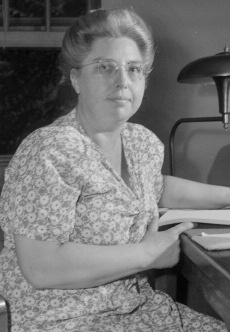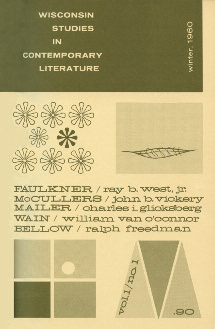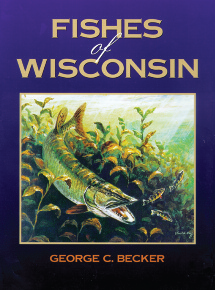 As another presidential election approaches, here’s a political reading list drawn from throughout the University of Wisconsin Press’s eighty years of publishing. This includes some truly landmark books, many demonstrating the important role of Wisconsin in American politics and the role of UWP in documenting that history.
As another presidential election approaches, here’s a political reading list drawn from throughout the University of Wisconsin Press’s eighty years of publishing. This includes some truly landmark books, many demonstrating the important role of Wisconsin in American politics and the role of UWP in documenting that history.
The Presidents We Imagine:  Two Centuries of White House Fictions on the Page, on the Stage, Onscreen, and Online
Two Centuries of White House Fictions on the Page, on the Stage, Onscreen, and Online
Jeff Smith
Examines the presidency’s ever-changing place in the American imagination, from the plays and polemics of the eighteenth century—when the new office was born in what Alexander Hamilton called “the regions of fiction”—to the digital products of the twenty-first century. A colorful, indispensable guide to the many surprising ways Americans have been “representing” presidents even as those presidents have represented them.
 The American Jeremiad
The American Jeremiad
Anniversary Edition
Sacvan Bercovitch
In this anniversary edition, the late Sacvan Bercovitch revisits his classic study of the role of the American political sermon, or jeremiad, from a contemporary perspective, assessing developments in the the culture at large. The American Jeremiad demonstrates how fully our national identity has been forged from conflicted narratives of self-examination and redemption.
A Black Gambler’s World of Liquor, Vice, and Presidential Politics:  William Thomas Scott of Illinois, 1839–1917
William Thomas Scott of Illinois, 1839–1917
Bruce L. Mouser
Foreword by Henry Louis Gates, Jr.
William Thomas Scott (1839–1917) was an Illinois entrepreneur and political activist who in 1904 briefly became the first African American nominated by a national party for president of the United States before his scandalous past forced him to step aside. Scott helped build the National Negro Liberty Party to forward economic, political, and legal rights for his race. But the underworld hustling that had brought him business success proved his undoing as a national political figure. He was the NNLP’s initial presidential nominee, only to be quickly replaced by a better-educated and more socially acceptable candidate, George Edwin Taylor.
For Labor, Race, and Liberty:  George Edwin Taylor, His Historic Run for the White House, and the Making of Independent Black Politics
George Edwin Taylor, His Historic Run for the White House, and the Making of Independent Black Politics
Bruce L. Mouser
More than one hundred years before Barack Obama, George Edwin Taylor made presidential history. Born in the antebellum South to a slave and a freed woman, raised and educated in Wisconsin, Taylor became the first African American ticketed as a political party’s nominee for president of the United States, running against Theodore Roosevelt in 1904. At a time when many African Americans felt allegiance to the Republican Party for its support of abolition, Taylor’s sympathy with the labor cause drew him first to the national Democratic Party and then to an African American party, the newly formed National Negro Liberty Party, which named him its presidential candidate.
Drift and Mastery: An Attempt to Diagnose the Current Unres t
t
Centennial Edition
Walter Lippmann
Introduction and notes by William E. Leuchtenburg
Foreword by Ganesh Sitaraman
In 1914, a brilliant young political journalist published a book arguing that the United States had entered a period of “drift”—a lack of control over rapidly changing forces in society. He highlighted the tensions between expansion and consolidation, traditionalism and progressivism, and emotion and rationality. Mastery over drift is attainable, Walter Lippmann argued, through diligent attention to facts and making active choices. Lippman’s Drift and Mastery became one of the most important and influential documents of the Progressive Movement. This centennial edition remains invaluable as a window to the political thought of early twentieth-century America and as a lucid exploration of timeless themes in American government and politics.
La Follette’s Autobiography: A Personal Narrative of Political Experiences
Robert M. La Follette
Foreword by Matthew Rothschild
Robert M. La Follette (1855–1925) was a member of the U.S. House of Representatives, governor of Wisconsin, U.S. senator, and the U.S. Progressive Party’s presidential candidate in 1924, winning one-sixth of the total national vote. His Autobiography is both a memoir and a history of the Progressive cause in the United States, charting La Follette’s formative years in politics, his attempts to abolish entrenched state and corporate influences, and his embattled efforts to advance Progressive policies. This centennial edition includes a foreword by Matthew Rothschild, former editor of The Progressive—the magazine that La Follette himself founded.
Joe McCarthy and the Press
Edwin R. Bayley
“No one who cares about liberty will read Mr. Bayley’s masterful study without a shudder about the journalistic cop-outs that contributed to making the nightmare called McCarthyism. This book reminds us that it could happen here, but perhaps will make it harder to happen next time.”—Daniel Schorr
“Thorough, incisive and fascinating, this is the best account we have of the strange relationship between Joe McCarthy and the American press.”—Arthur Schlesinger Jr.
 When Government Was Good: Memories of a Life in Politics
When Government Was Good: Memories of a Life in Politics
Henry S. Reuss
With a Foreword by John Kenneth Galbraith
U. S. House Representative Henry S. Reuss (D-Wisconsin, 1955–83) believed there was indeed a time when government worked—the “Golden Age” of 1948–68. The economy was functioning, the long overdue civil rights movement had begun to blossom, and the government had integrity. In his memoir, When Government Was Good, he blasts the political forces that he believed led to the disintegration of that Golden Age: economic and racial inequality and excessive militarism.
With Honor:  Melvin Laird in War, Peace, and Politics
Melvin Laird in War, Peace, and Politics
Dale Van Atta
Foreword by President Gerald R. Ford
In 1968, at the peak of the Vietnam War, centrist Congressman Melvin Laird (R-WI) agreed to serve as Richard Nixon’s secretary of defense. It was not, Laird knew, a move likely to endear him to the American public—but as he later said, “Nixon couldn’t find anybody else who wanted the damn job.” This biography illuminates Laird’s behind-the-scenes sparring with Henry Kissinger over policy, his decisions to ignore Nixon’s wilder directives, his formative impact on arms control and health care, his key role in the selection of Ford for vice president, his frustration with the country’s abandonment of Vietnamization, and, in later years, his unheeded warning to Donald Rumsfeld that “it’s a helluva lot easier to get into a war than to get out of one.”
The Man from Clear Lake:  Earth Day Founder Senator Gaylord Nelson
Earth Day Founder Senator Gaylord Nelson
Bill Christofferson
The life of Gaylord Nelson, a small-town Wisconsin boy who learned his values and political principles at an early age, is woven through the political history of the twentieth century. His story intersects at times with Fighting Bob La Follette, Joe McCarthy, and Bill Proxmire in Wisconsin, and with George McGovern, Lyndon Johnson, Hubert Humphrey, Russell Long, Walter Mondale, John F. Kennedy, and others on the national scene. His founding of Earth Day in 1970 permanently changed national and global politics; more than one billion people worldwide now participate in annual Earth Day activities.
 Raising Hell for Justice: The Washington Battles of a Heartland Progressive
Raising Hell for Justice: The Washington Battles of a Heartland Progressive
David R. Obey
David R. Obey (D-Wausau) served in the U.S. House of Representatives longer than anyone in Wisconsin history, culminating in the chairmanship of the House Appropriations Committee. After forty years in Congress, Obey looks back on his journey in politics beginning with his early years in the Wisconsin Legislature, when Wisconsin moved through eras of shifting balance between Republicans and Democrats. On a national level Obey traces, as few others have done, the dramatic changes in the workings of the U.S. Congress since his first election to the House in 1969. He discusses his own central role in the evolution of Congress, ethics reforms, and crucial chapters in our democracy.
 Emergency Presidential Power: From the Drafting of the Constitution to the War on Terror
Emergency Presidential Power: From the Drafting of the Constitution to the War on Terror
Chris Edelson
Foreword by Louis Fisher
Defining the scope and limits of emergency presidential power might seem easy—just turn to Article II of the Constitution. But as Chris Edelson shows, the reality is complicated. In times of crisis, presidents have frequently staked out claims to broad national security power. Drawing on excerpts from the U.S. Constitution, Supreme Court opinions, Department of Justice memos, and other primary documents, Edelson weighs the various arguments that presidents have used to justify the expansive use of executive power.

Power without Constraint: The Post-9/11 Presidency and National Security
Chris Edelson
As a presidential candidate, Barack Obama criticized the George W. Bush administration for its unrestrained actions in matters of national security. In a thorough comparison of the Bush and Obama administrations’ national security policies, Chris Edelson demonstrates that President Obama and his officials have used softer rhetoric and toned-down legal arguments, but in key areas—military action, surveillance, and state secrets—they have simply found new ways to assert power without meaningful constitutional or statutory constraints. Edelson contends that this legacy of the two immediately post-9/11 presidencies raises crucial questions for future presidents, Congress, the courts, and American citizens.
Wisconsin Votes:  An Electoral History
An Electoral History
Robert Booth Fowler
This history of voting in Wisconsin from statehood in 1848 to 2008 both tracks voting in key elections across the years and investigates electoral trends and patterns over the course of Wisconsin’s history. Fowler explores the ways that ethnic and religious groups in the state have voted historically, discusses the great struggle for women’s suffrage, and reminds us of many Wisconsin third parties—Socialists, Progressives, the Prohibition Party, and others. Here, too, are the famous politicians in Wisconsin history, including the La Follette family, William Proxmire, and Tommy Thompson.
 Earlier this month, chemistry professor Bassam Shakhashiri and his crew staged their 47th presentation of “Once Upon a Christmas Cheery, in the Lab of Shakhashiri.” The popular family-friendly show of colorful and surprising chemical demonstrations, accompanied by live music and a visit from Santa, delivers a message that has long been Shakhashiri’s slogan: Science Is Fun!
Earlier this month, chemistry professor Bassam Shakhashiri and his crew staged their 47th presentation of “Once Upon a Christmas Cheery, in the Lab of Shakhashiri.” The popular family-friendly show of colorful and surprising chemical demonstrations, accompanied by live music and a visit from Santa, delivers a message that has long been Shakhashiri’s slogan: Science Is Fun!

 UWP published Volume 1 of CHEMICAL DEMONSTRATIONS: A HANDBOOK FOR TEACHERS OF CHEMISTRY in 1983. That first volume offered 282 chemical demonstrations arranged in 11 chapters, setting the pattern for the following four volumes focused on different kinds of chemical phenomena. Each demonstration includes seven sections: a brief summary, a materials list, a step-by-step account of procedures to be used, an explanation of the hazards involved, information on how to store or dispose of the chemicals used, a discussion of the phenomena displayed and principles illustrated by the demonstration, and a list of references.
UWP published Volume 1 of CHEMICAL DEMONSTRATIONS: A HANDBOOK FOR TEACHERS OF CHEMISTRY in 1983. That first volume offered 282 chemical demonstrations arranged in 11 chapters, setting the pattern for the following four volumes focused on different kinds of chemical phenomena. Each demonstration includes seven sections: a brief summary, a materials list, a step-by-step account of procedures to be used, an explanation of the hazards involved, information on how to store or dispose of the chemicals used, a discussion of the phenomena displayed and principles illustrated by the demonstration, and a list of references. ureate in chemistry Roald Hoffmann has pronounced the series, “The most comprehensive set of chemical demonstrations handbooks ever created.” Taken together, the five volumes constitute the bestselling publication in the University of Wisconsin Press’s eighty-year history.
ureate in chemistry Roald Hoffmann has pronounced the series, “The most comprehensive set of chemical demonstrations handbooks ever created.” Taken together, the five volumes constitute the bestselling publication in the University of Wisconsin Press’s eighty-year history.



 lebrating
lebrating 





 Livia Appel was appointed the first managing editor (essentially, the first director) of the University of Wisconsin Press in 1937. University Press Committee records from the time indicate that she was hired because she thoroughly understood academic publishing operations and could be employed for much less pay than a man.
Livia Appel was appointed the first managing editor (essentially, the first director) of the University of Wisconsin Press in 1937. University Press Committee records from the time indicate that she was hired because she thoroughly understood academic publishing operations and could be employed for much less pay than a man.
 Dance as an academic field of study has deep roots at the University of Wisconsin, where Margaret H’Doubler
Dance as an academic field of study has deep roots at the University of Wisconsin, where Margaret H’Doubler 





 cinating figures in American history and the nation’s most celebrated advocate for land preservation and national parks. Muir’s writings convinced the U.S. government to create the first national parks at Yosemite, Sequoia, Grand Canyon, and Mt. Rainier. An NPS biographical
cinating figures in American history and the nation’s most celebrated advocate for land preservation and national parks. Muir’s writings convinced the U.S. government to create the first national parks at Yosemite, Sequoia, Grand Canyon, and Mt. Rainier. An NPS biographical 
 years. In 1965, we reissued Muir’s autobiography,
years. In 1965, we reissued Muir’s autobiography, 
 American public, governmental protection of natural resources, the establishment of the National Parks, and the encouragement of tourism.
American public, governmental protection of natural resources, the establishment of the National Parks, and the encouragement of tourism.




 As another presidential election approaches, here’s a political reading list drawn from throughout the University of Wisconsin Press’s eighty years of publishing. This includes some truly landmark books, many demonstrating the important role of Wisconsin in American politics and the role of UWP in documenting that history.
As another presidential election approaches, here’s a political reading list drawn from throughout the University of Wisconsin Press’s eighty years of publishing. This includes some truly landmark books, many demonstrating the important role of Wisconsin in American politics and the role of UWP in documenting that history.


 George Edwin Taylor, His Historic Run for the White House, and the Making of Independent Black Politics
George Edwin Taylor, His Historic Run for the White House, and the Making of Independent Black Politics









 In April of 2016, we kicked off our 80th anniversary year with a
In April of 2016, we kicked off our 80th anniversary year with a 









 Land Economics, Arctic Anthropology, and Monatshefte. Five of these continue as UWP journals, joined by later acquisitions.
Land Economics, Arctic Anthropology, and Monatshefte. Five of these continue as UWP journals, joined by later acquisitions. available
available  2010s Several new book series are launched:
2010s Several new book series are launched: